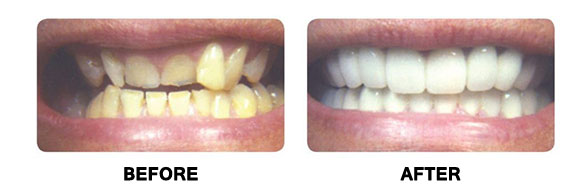Home » The 3 Specialties of a Comprehensive Dentist
Did you know that your dentist can provide three different types of dental care? In order to become a general dentist, candidates must undergo rigorous training that is comparable to medical school. They must complete four years of undergrad and another four years of dental school before they can earn the title general dentist. General dentists may have two suffixes, either DMD or DDS, however they are both equal.
Once they have obtained their dental degree, they must pass a national dental exam as well as a state licensing exam. Only after both exams are passed can they legally and safely practice as general dentists. After all this, it is pretty safe to say that your general dentist must really know their stuff. During their dental education, dentists receive training in three specific areas. This allows comprehensive dentists to offer their patients three different types of dentistry, including:


Contrary to popular belief, the vast majority of general dentistry is preventative services. General dentists are committed to preserving their patient’s oral health through regular dental exams and cleanings. Dental exams are intended to identify and treat possible dental issues early on, while dental cleanings aim to remove excess plaque to reduce the risk of developing tooth decay or gum disease. General dentists may also order dental x-rays to assess bone health, check for cavities, and to diagnose impacted wisdom teeth. Additional preventative dental treatments provided by a general dentist include dental sealants and fluoride treatments.

Unfortunately, even with the best preventative dental care things can still go wrong. This is where restorative dentistry comes in. Simply stated, restorative dental services are those that restore the natural appearance and function of the teeth. In most cases, restorative dentistry is directed at removing decayed tissue, filling cavities, and repairing damage to the teeth such as chips and cracks. Certain restorative dental treatments are also able to replace a single or multiple missing teeth. Some common examples of restorative dental treatments provided by a comprehensive dentist include composite fillings, dental crowns and bridges, dental implants, and root canals.


Like restorative dentistry, cosmetic dentistry restores decayed, damaged, or missing teeth. However, the main difference between restorative and cosmetic dentistry is that cosmetic dentistry restores the function while also enhancing the visual aesthetics. Although restorative dentistry restores appearance, it lacks the same attention to detail as cosmetic dentistry. Cosmetic dental services don’t only restore the natural appearance, they can also correct discolorations, alignment, spacing, and the size and shape of the teeth. Some examples of cosmetic dental services provided by a comprehensive dentists are teeth whitening and veneers.
When you visit a comprehensive dentist, you can expect to receive preventative, restorative, and cosmetic dental care all at the same dental practice. While preventative services are the most commonly performed, it is reassuring to know that if you opt for restorative or cosmetic services, you will be able to see the same dentist. Due to their rigorous training and experience, general dentists make your life easier by providing a one-stop-shop for all you and your families dental needs.

Dr. Anthony Mancino is Monmouth and Ocean County New Jersey’s General and Cosmetic Dentist and has been practicing for over 25 years focusing on cosmetic and overall dental health. Dr. Mancino is a graduate of Villanova University and University of Pennsylvania. He is also a member of the American Dental Association, New Jersey Dental Association, Monmouth & Ocean County Dental Association, American Academy of Cosmetic Dentistry, and the Academy of General Dentistry.
After-Hours Emergencies Or Issues
Call 732-556-9600
Our Services
Dental Emergencies
General Dentistry
Cosmetic Dentistry
Restorative Dentistry
Full Mouth Reconstruction
Smile Makeover

3350 Route 138 W
Bldg 2, Ste 127
Wall Township, NJ 07719
(732) 556-9600
 3350 NJ-138 W. Bldg 2, Ste 127, Wall Township, NJ 07719
732-556-9600
Prices Vary
Comprehensive Dentistry -
5 star rating - based on 25+ reviews in Google
3350 NJ-138 W. Bldg 2, Ste 127, Wall Township, NJ 07719
732-556-9600
Prices Vary
Comprehensive Dentistry -
5 star rating - based on 25+ reviews in Google
